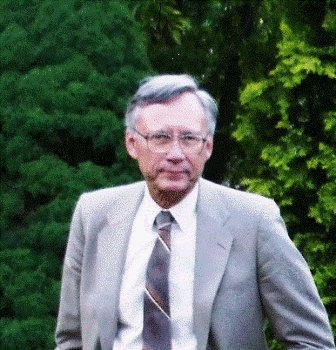- Returning Physics Equations to their Empirical Roots (2013) [Updated 1 decade ago]
- The Empirical Nature of Mass (2013) [Updated 1 decade ago]
- The Empirical Nature of Mass (2013) [Updated 9 years ago]
- Returning Physics Equations to their Empirical Roots (2013) [Updated 1 decade ago]
Newton’s discovery of f=ma resulted from mathematically modeling patterns observed in changes of velocities. Its first form was fully empirical. The patterns were represented by acceleration. From those patterns it was inferred that there were two other properties, force and resistance to force. Resistance to force was called mass. The properties of distance and time were naturally indefinable. There were no properties before them by which to define them. Acceleration consists of those two indefinable properties. It was believed that either force or mass must also be made an indefinable property. Mass was made the third indefinable property. All other mechanical physics properties are definable in terms of distance, time and mass. That decision was the first step in adding theory onto physics equations. All theory that followed was affected by that decision. This paper presents the alternative view where neither force nor mass are made an indefinable property. Both are defined using only those same terms in which the empirical evidence, from which their existence was inferred, is expressed. Those terms in which acceleration is expressed are the properties of distance and time. Their units are meters and seconds. Both mass and force are given units defined from combinations of meters and seconds. There are multiple possible combinations. The choice that was logical and successful was to give mass units of inverse acceleration. Force, as the ratio of two accelerations was reduced to being unit free. The consequence of that act was that fundamental unity was achieved and remained present in the development of theory that followed. The physical meaning of inverse acceleration and important portions of higher level theory that followed are presented.
- The Empirical Nature of Mass (2013) [Updated 1 decade ago]
The practice of defining physics properties in terms of the indefinable properties of their empirical evidence is introduced. An indefinable property is one that cannot be defined in terms of pre-existing properties. All empirical evidence consists of patterns in changes of velocities of objects. Change of velocity with respect to time is acceleration. Acceleration is defined using just the two properties of distance and time. There are no properties pre-existing distance and time. Mass is defined from these empirical properties only. It is through units that properties are represented in physics equations. The units of acceleration are meters/second2 consisting only of meters and seconds. The units of mass are re-defined as a combination of meters and seconds. All units of mechanics are definable from those of mass, distance, and time. Therefore, all units herein are defined using combinations of meters and seconds only. Results are presented. Thermodynamic entropy, which Clausius defined in a precise ideal manner, is precisely explained. The physical meanings for both Boltzmann’s constant and the universal gas constant are explained. The two expressions for the fine structure constant are unified which, by virtue of one definition’s dependency upon constants from each of the major theoretical groups, extends fundamental unity to all physics. A universal increment of time is introduced. A principle of conservation of acceleration is proposed. Theory, the practice of inventing substitutes to fill in for lack of knowledge, is removed from the equations of physics. The math used is algebraic manipulation of incremental values.
- The Empirical Nature of Mass (2013) [Updated 9 years ago]
The practice of defining physics properties in terms of the indefinable properties of their empirical evidence is introduced. An indefinable property is one that cannot be defined in terms of pre-existing properties. All empirical evidence consists of patterns in changes of velocities of objects. Change of velocity with respect to time is acceleration. Acceleration is defined using just the two properties of distance and time. There are no properties pre-existing distance and time. Mass is defined from these empirical properties only. It is through units that properties are represented in physics equations. The units of acceleration are meters/second2 consisting only of meters and seconds. The units of mass are re-defined as a combination of meters and seconds. All units of mechanics are definable from those of mass, distance, and time. Therefore, all units herein are defined using combinations of meters and seconds only. Results are presented. Thermodynamic entropy, which Clausius defined in a precise ideal manner, is precisely explained. The physical meanings for both Boltzmann’s constant and the universal gas constant are explained. The two expressions for the fine structure constant are unified which, by virtue of one definition’s dependency upon constants from each of the major theoretical groups, extends fundamental unity to all physics. A universal increment of time is introduced. A principle of conservation of acceleration is proposed. Theory, the practice of inventing substitutes to fill in for lack of knowledge, is removed from the equations of physics. The math used is algebraic manipulation of incremental values.



